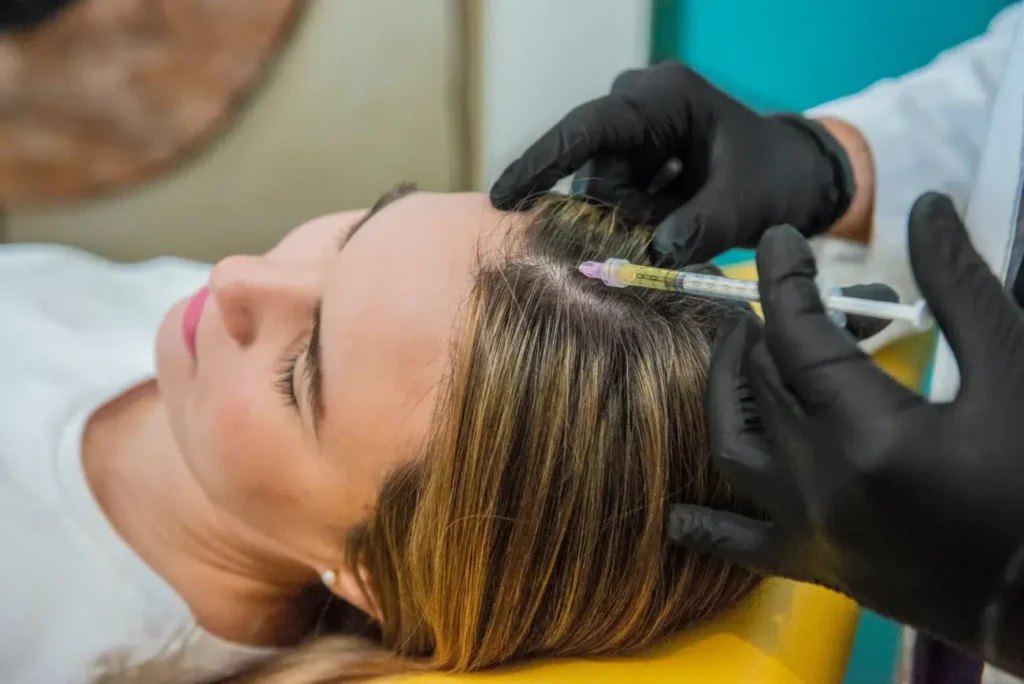Hair loss can be stressful — and choosing the right treatment often comes with its own concerns, especially about discomfort. Platelet-Rich Plasma (PRP) therapy is a popular non-surgical option for treating thinning hair, but many patients ask the same question:
“Is PRP hair restoration painful?”
If you’re a medical patient managing other health conditions or sensitivities, this guide will walk you through what to expect before, during, and after PRP — and how pain plays into the picture.
What Is PRP for Hair Loss?
PRP therapy involves drawing a small amount of your blood, processing it in a centrifuge to concentrate the platelets, and then injecting this enriched plasma into areas of the scalp experiencing hair thinning. These platelets release growth factors that stimulate the hair follicles, promote healing, and encourage regrowth.
How Painful Is PRP for Hair Loss?
PRP injections are generally well-tolerated, but everyone’s pain threshold is different. Most patients describe the experience as mild to moderate discomfort, not intense pain.
What the Procedure Feels Like:
- Blood Draw: Similar to any standard blood test. Quick and minimally uncomfortable.
- Scalp Injections: Patients often feel:
- Pinching or stinging as the needle enters the skin.
- Pressure or heat as the PRP is injected.
- Sensitivity in certain areas of the scalp (especially around the temples or crown).
Duration of Discomfort:
The injection process typically takes 15–30 minutes, depending on the size of the treatment area. Any discomfort during the procedure is short-lived, and post-treatment tenderness usually resolves within 24–48 hours.
Pain Management During PRP Treatment
Clinics often take several steps to keep you comfortable:
✅ Topical Numbing Cream
Applied to the scalp 30–45 minutes before the procedure to reduce surface sensitivity. Many patients report little to no pain after numbing.
✅ Ice Packs or Cooling Devices
Cold compresses before and after injections can help minimize discomfort and inflammation.
✅ Pro-Nox (Nitrous Oxide)
Some clinics offer laughing gas for anxious or pain-sensitive patients, allowing you to stay relaxed throughout the treatment.
Considerations for Medical Patients
If you have underlying health concerns, you may be more sensitive to discomfort or inflammation. Here’s what to consider:
1. Chronic Pain Conditions
Patients with fibromyalgia, migraines, or neuropathic pain may perceive procedures as more painful than average. Pre-treatment medications or sedation options can be discussed.
2. Autoimmune Disorders
Conditions like lupus or rheumatoid arthritis can increase skin sensitivity. PRP might still be an option, but your physician should assess risk vs. benefit.
3. Blood Thinners or Bleeding Disorders
These can increase bruising and tenderness after injections. Let your doctor know ahead of time so your plan can be adjusted safely.
4. Anxiety or Needle Phobia
If you’re nervous about injections, tell your provider. Many offer calming techniques, distraction tools, or even mild sedatives.
Aftercare and Recovery
Most patients return to normal activities the same day. Here’s what to expect post-procedure:
- Mild scalp soreness or tenderness (especially when combing or washing your hair)
- Redness or swelling at injection sites (typically fades within 24 hours)
- Minimal bruising, especially in patients with thinner skin or on blood thinners
Tips to Minimize Post-Procedure Pain:
- Avoid washing your hair for 24 hours
- Use OTC pain relievers like Tylenol (acetaminophen) — avoid NSAIDs like ibuprofen unless approved
- Sleep with your head slightly elevated for the first night
Is the Discomfort Worth It?
If you’re a good candidate for PRP, most patients find the minor discomfort well worth the potential rewards:
- Thicker, fuller hair
- Reduced hair shedding
- Natural, non-surgical results
- Boost in self-confidence
Remember, PRP is not a one-time treatment. Most patients need 3–6 sessions spaced about a month apart, with touch-ups every 4–6 months for maintenance.
Final Thoughts: What Medical Patients Should Know
If you’re managing a medical condition or simply worried about pain, PRP is generally a safe and tolerable procedure when performed by an experienced provider. Proper pre-treatment care, numbing techniques, and a personalized plan can greatly minimize discomfort.
Always Consult with a Specialist
A board-certified dermatologist or hair restoration expert can evaluate your health status, explain the process in detail, and recommend the best options to keep you comfortable — both during and after treatment.




